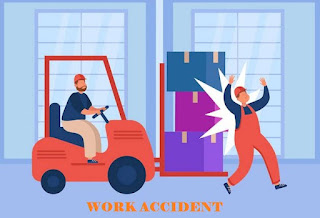Modern Concepts of Accident Prevention
As the foregoing discussion indicates, some of the basic concepts developed early in the safety movement have remained unchanged, some have been discarded, and others have been modified and refined.
Those earlier concepts and theories that have been modified and refined are worthy of review:
1. “Accident proneness” was a popular concept that received considerable attention until the late 1950s. The theory has been abandoned because no one has been able to find enduring psychological traits, physical or mental characteristics, or environmental factors that differentiate the “accident prone” from others.
It is now believed that most of the so-called accident prone are victims of the laws of probability. Based on chance alone, some poor devils will have more accidents than their more fortunate associates.
2. Group-administered safety education as generally utilized, particularly by industry, is not wholly effective. It does not really accomplish what management thinks it accomplishes.
A general redirection of effort toward a continuing individualized and personalized safety training is needed. Workers must be told what the hazards are and what to do to avoid them on a person-to-person basis.
3. It is now recognized that safety posters, safety contests, prizes, and razzle-dazzle safety promotions are of limited value in stimulating and motivating employees to work safely.
Such devices should be used to supplement the safety activities of managers and supervisors, but they cannot be used in place of management action with any degree of success. In particular, scare-type posters and safety messages that appeal to fear may actually hurt rather than help the safety campaign.
4. A concept prevalent in the early 1900s that no more than 50% of all accidents could be prevented changed to a concept of the 1940s that all accidents could be prevented, and finally to a more realistic theory that not all accidents can be prevented but in those cases where absolute prevention is not possible, steps can usually be taken to reduce the severity of the injury or damage.
5. A trend is developing toward broadening the scope and the functions of the safety engineer position. Safety/loss control is now recognized as being a unique multidisciplinary type of work having its own character and dimensions, and it is also a multi functional undertaking, encompassing safety engineering, industrial hygiene, human factors engineering, product safety, fire protection engineering, security, and so on.
Much of the work of the safety engineer in each of these functions involves risk identification, risk evaluation, and risk control.
6. There has been a shift in emphasis in accident prevention from action after to action before the accident occurs. Thus instead of basing accident prevention recommendations on the results of an accident investigation, a greater effort is now made to analyze and appraise the loss potential of the system or subsystem and to organize and administer the safety program accordingly.
7. The work of safety engineers has changed materially in the past few years. At one time they were the doers; they took direct action by investigating most of the accidents, conducting the safety meetings, placing the orders for the guards and safety equipment, and dealing directly with employees—even to the extent of personally taken disciplinary action.
Modem safety practices cast them as the safety advisor and teacher of managers. They help supervisors, managers, planners, and design engineers to find answers to their safety problems. They develop factual, unbiased, and objective information about loss control and accident causation and provide data to all those who need to know so they can make sound decisions concerning the action they must take to prevent accidents.
8. Accident analysis and investigation are becoming more sophisticated. It is now realized that accident causes can no longer be placed into the commonly accepted, simple, tight categories of unsafe acts and unsafe conditions.
A study and analysis of the entire situation, personal and environmental, emotional and physical, transient and prevailing, must be made to determine the multiple contributing and the immediate causes of the accident. Assigning a single cause to any one accident could be misleading.
9. In the past the cause of an accident and the cause of the injury was usually considered synonymous. Now, the sharp delineation that must be made between the injury cause and the accident cause is recognized. Why the person was injured becomes a separate question from why the accident occurred.
10. One long-revered industrial safety practice is to report and investigate all accidents resulting in injury and to measure safety performance in terms of the number of disabling injuries reported in a given period.
This narrow concept is giving way to all-accident control programs in which the no-injury accidents are investigated and given the same careful scrutiny formerly accorded to only the disabling injury-producing accident.
To some, the no-injury accident is a “near-miss.” Except for chance, the accident could have produced a serious injury—such as a load falling from a hoist and hitting only the floor, or an electrical shock that produces no injury.

Post a Comment for "Modern Concepts of Accident Prevention"